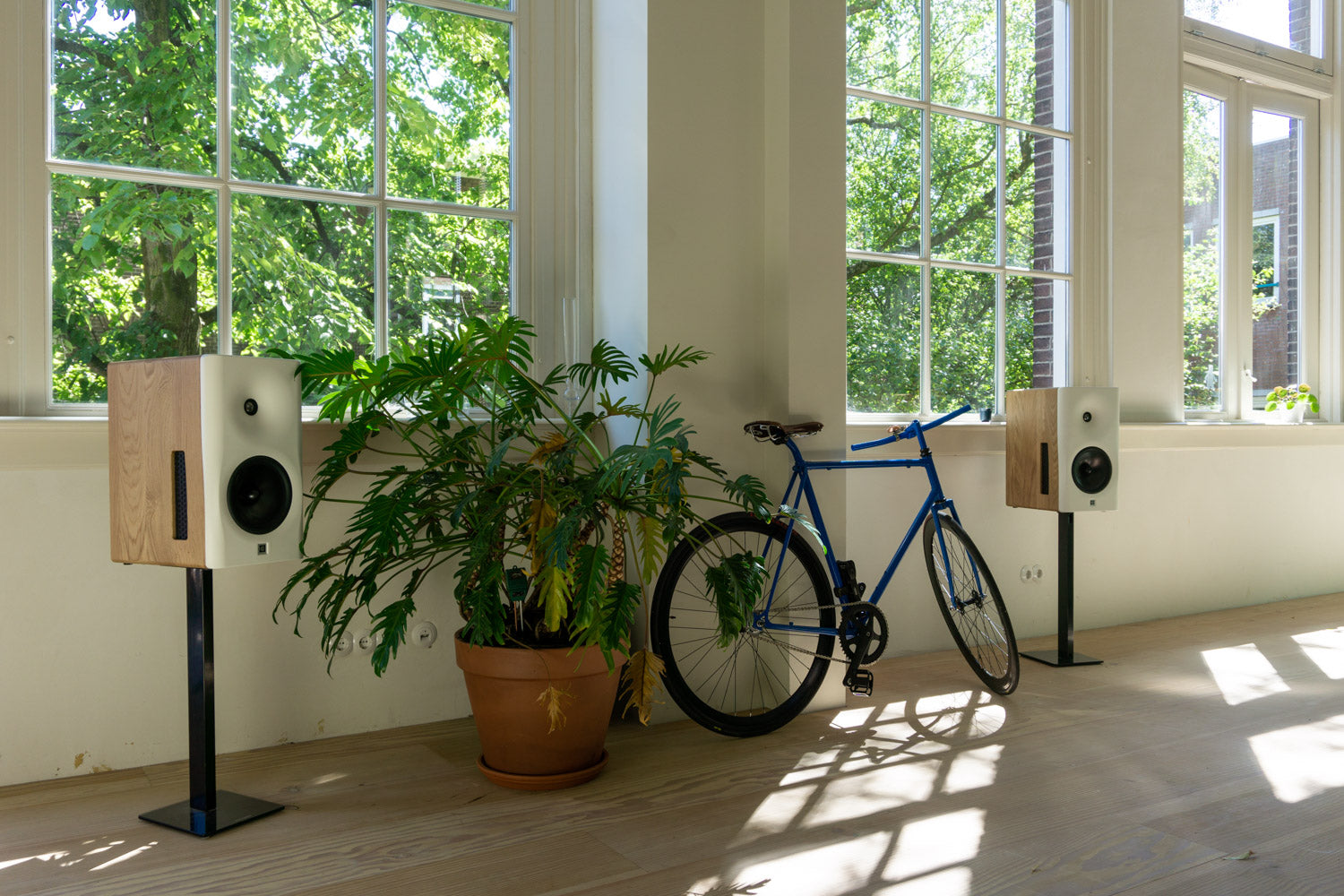RoomMatching
Why RoomMatching?
Imagine listening to the best sounding, conventional speakers you've ever heard.
Now imagine placing them in your bathroom. How would they sound there? Not so great, right?
While that is an exaggerated example, it illustrates the point perfectly: room acoustics have a significant impact on sound quality. The problem is that loudspeaker-room interaction is very difficult to control in real-world environments. And yet, this is where Dutch & Dutch has focused their efforts. Instead of squeezing the last few drops of optimization out of conventional loudspeaker design, we created RoomMatching. A stack of technologies that integrate the room into the listening chain. Why RoomMatching? Because room interaction is where significant improvements in audio quality can still be made.
Room Interaction
Among all the components in your reproduction system, the loudspeaker holds the throne as the most crucial one. It's the heart and soul of your setup. It has the greatest impact on the sound quality you'll hear, and is therefore the component that demands most of your attention.
Unfortunately, even if you've selected an outstanding speaker, its performance might be disappointing. That is because every loudspeaker interacts with the acoustic characteristics of the room it is placed in.
The sound quality you hear, is primarily determined by two things:
- The quality of your loudspeakers, and;
- The way they interact with the acoustics of your room.
When a loudspeaker emits sound waves, they propagate into the surrounding space and interact with the room's walls, objects and surfaces. This interaction can impact the sound, leading to a muddled, boomy bass, or other unpleasant quality that detracts from the overall listening experience.
One way to solve this problem, is to build a room with perfect acoustics. This works, but it is often unpractical if not unattainable. Luckily another solution exists.
RoomMatching
Whether your room is small or big, acoustically treated or not. Whether the 8c's are placed far away from objects, close to the wall or even tucked in the corner. 8c's will deliver impeccable sound. That is because the 8c was designed to take room interaction into account. The collection of acoustic and digital technologies that enable the 8c to adapt to any environment, is called RoomMatching.
Acoustics first
When thinking about a speaker that adapts to the room, Digital Signal Processing may come to mind. Yet, although the 8c does employ DSP, they are an acoustic solution first. We believe that any acoustical problem that can be solved with 'sound' speaker design, should not be "cured" with DSP, as that can introduce its own set of problems. Instead, DSP should be the proverbial cherry on top.
- The vents on each side of the 8c's cabinet outputs out-of-phase mid frequencies to form a Cardioid Midrange, drastically reducing harmful reflections by the sound that is splayed off of walls.
- The 8c's tweeter is embedded in a large Minimum Diffraction Waveguide. It ensures that high frequencies have the exact same directivity as the mids, giving the 8c Constant Directivity above 100 Hz
- This is combined with the 8c's unique Boundary Coupled Bass. The twin woofers on the back of the 8c acoustically couple with the wall, to improve bass precision and minimize time-smearing.
The 8c relies on a number of acoustical innovations to maximize its ability to adapt to the acoustics of any room, and minimize its dependency on digital room correction.
DSP Second
The above ensures that 8c’s complement the listening room acoustically, even before the involvement of Digital Signal Processing. The DSP is used to take the performance of the 8c even further. The 8c uses DSP to adapt its behavior to the specific requirements of the room the it is placed in. By telling the 8c how far away it is from its boundaries, as well as the dimensions of the listening triangle it is in, the 8c is able to set up the basics of RoomMatching. To second part is to perform room measurements and using the 8c's onboard room correction to correct the frequency response in the bass.
The first part is done in the 8c's accompanying app, Ascend. The second part relies on Room EQ Wizard, which is freely available online and connects directly to the 8c. A comprehensive guide on how to use REW can be found here. Alternatively, a trained Dutch & Dutch professional can set up RoomMatching for you through our Remote Commissioning Service.
Easy placement
The combination of the cardioid midrange, boundary coupled bass, the minimum diffraction waveguide and the DSP's boundary time-alignment functionality - unlike other speakers - the 8c's can be placed very close to the wall behind it without detrimental effects. To the contrary! The 8c's will actually sound even better if placed close to the wall.
A Real-World Solution
Loudspeaker-room interaction is often neglected in loudspeaker design because it is a complex and multifaceted phenomenon that can be difficult to control. Manufacturers typically design their speakers to sound as good as possible in a laboratory setting, where there are no reflections or other room-related factors to take into account. However, once the speakers are placed in a real-world environment such as your living room or studio, their performance can be significantly affected by the interactions with the room.
8c loudspeakers are unique in that they are designed to adapt to their environment. 8c's don't fight your room's acoustics, they work in harmony with them. Thanks to cutting-edge technologies like the cardioid midrange and boundary coupling in the bass, 8c's can be placed close to walls or even in corners. Big rooms or small, treated or not, it doesn't matter. The 8c's do acoustics judo, using the force of their opponent to win the game. That is what we call RoomMatching.
Would you like to experience RoomMatching for yourself? Why not book a demo?
